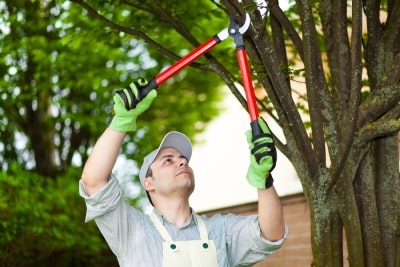Did you recently pick up items like weed control, digging tools, pruners, and tree trimmers in San Jose? If so, then you may be getting ready to clean up your landscaping for spring. If you have never tried your hand at tree trimming and pruning before, then consider the following information before you get started:
Start with the Biggest Cuts
Before you take to trimming off small branches here and there, it’s important to begin tree pruning by planning the biggest cuts in advance. As you strategize, bear in mind that you should never cut off more than a third of the tree’s growth at once. To prevent tearing, any branch that has a diameter greater than 3 inches should be removed with a pruning saw and a 3-part cut. Then, cut off the branch’s stub at an angle and allow the tree to heal on its own. Over time, a branch collar will form around the clean cut.
Remove Growth from the Base
When you start to prune your trees, you may notice that they have branches growing upward from the base. These growths, called suckers, can significantly detract from a tree’s appearance and should be removed. Also, leaving these branches intact can drain nutrients and energy from the productive parts of the tree that generate fruit and blossoms. Hand pruners and loppers can be used for this step, but take care not to damage the bark on the trunk of the tree as you work.
Trim Growth from the Branches
Small, vigorous shoots called water sprouts might be found along the tree’s main branches. These thin shoots grow straight up and can cause crowding in the tree’s canopy, and when the foliage becomes too dense, this can block sunlight and airflow and may affect the tree’s health, over time. Next, begin inspecting the tree for any branches that are growing in an unfavorable direction. Lastly, trim branches that are directed in towards the trunk, where they will struggle to get light, and those that are rubbing against other branches.





